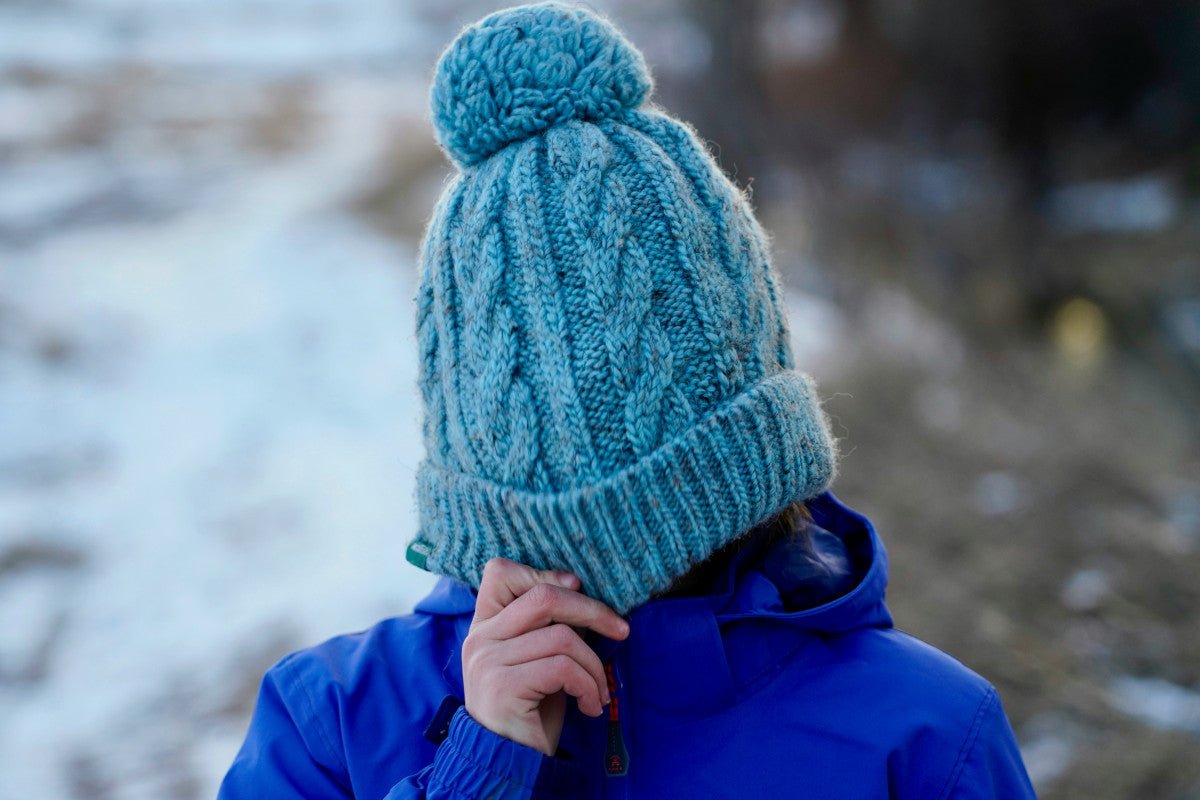Whether you’re looking to design socks for your team or want to start selling them as merchandise, you’ll quickly get overwhelmed by just how many different types of socks you have at your disposal.
Choosing among the different sock types gets even more complicated once you realize there is no one standardized way to categorize them, either. It can be done by length, purpose, or material. That’s why we’ve put together this guide to help you pick the perfect style.
From crew socks to ankle socks, athletic socks to dress socks, cotton socks to wool socks - the possibilities are almost endless. But here at Diehard Custom, we’ve simplified things for our customers by narrowing it down to just custom crew socks and custom ankle socks.
Because while there are so many different styles, these are by far the most popular we get asked for. Learn why below as we dive deep into the wide world of sock styles!
Are There Different Types of Socks?
We know what you’re thinking…socks are just socks, right? Wrong. There are countless styles, materials, and functions designed to suit different needs.
While everyone needs to wear socks, and the general theme of socks remains the same (protecting your feet, regulating temperature, adding style), there are subtle nuances at play.
Socks differ in length, fabric composition, cushioning, and fit, and in turn, different sock types have their own respective functionalities and comfort levels. Some are designed for breathability and sweat control, while others focus on insulation and warmth.
So, just how many types of socks are there? The answer might surprise you.
How Many Types of Socks Are There?
We can’t necessarily give you a one-size-fits-all answer, but we can tell you that we’re going to cover 20 different types of socks in this guide today. But remember, these styles are broken down based on length, use case, and material.
So technically, you could mix and match these different factors to form a seemingly endless number of sock styles! It’s also worth noting that new sock styles are constantly emerging. Who knows - the latest and greatest in sock designs could pop up tomorrow for all we know!
But for the sake of simplicity, we’re just going to focus on the most common sock styles on the market right now. So, what are the different types of socks?
What are the Different Types of Socks?
We’ll break our sock types guide up into three sections: categorizing based on length, purpose, and material. All three of these distinctions are important since your ideal sock involves careful consideration of each. Let’s start by categorizing sock styles based on length.
Categorizing Socks by Length
Sock length shapes comfort, style, and functionality, so it definitely cannot be overlooked. Some people don’t want anyone to know they’re wearing socks, while others look at their socks as the finishing touch on the outfit.
No-Show Socks
As the name suggests, these are designed to be invisible inside shoes. They’re worn with loafers, sneakers, and low-cut footwear. No-show socks are fairly casual but can also be athletic.
They’re perfect for summer outfits where you want a sock-free look without the blisters and sweat buildup you’d get from going sockless. However, they can slide down inside the shoe without a proper grip. You might get some shoe friction on your ankles, too.
Ankle Socks
The next step up in length is the ankle sock, which sits just above the ankle bone for a bit more coverage. Still, these are low-profile and ultra-breathable - great for running, gym workouts, and casual sneakers.
They provide a bit more protection against friction than no-show socks, but some people don’t love the look with just a tiny bit of sock popping out above the shoe. Like no-show socks, they’re not a great choice for winter wear, either.
That being said, ankle socks are very popular. We specialize in this sock style at Diehard Custom - reach out to learn more about whether or not these are the right choice for you.
Crew Socks
Crew socks are one of the most versatile options on the market, which is why they’re so popular. They extend to the mid-calf and offer exceptional coverage and support in any use case, be it casual, athletic, or professional settings.
However, they can be a bit warm in hot weather. Getting them to stay right where you want them on your calf isn’t always easy, either. That’s why you need to make sure you’re getting the best crew socks possible, right here at Diehard Custom.
Knee-High Socks
Knee-high socks extend up to the knee for even more warmth, compression, and style. They’re used for fashion, sports, and medical applications. For instance, soccer uniforms typically feature knee-high socks, and they can be used to improve circulation as well.
They look a bit goofy in everyday wear, though. They’re not the most comfortable choice for warm weather, either. You might find them too restrictive in some cases, too.
Over-the-Calf Socks
Finally, there are over-the-calf socks which are also called thigh-high socks in some cases. These go just about the knee joint for even more coverage and support.
You’ll typically find these worn in formal settings,for medical compression therapy, and in extreme cold. That being said, they’re definitely not the most common or versatile. They’ll be too thick for everyday wear, and the extra material means these socks can be a bit pricey.
Categorizing Socks by Purpose
We also see socks classified based on their intended purpose. This categorization system makes more sense if you don’t necessarily care about the length of your socks and just want whatever works best for a given situation.
Athletic Socks
These are the socks you want to wear anytime you’re playing sports or working out. They feature moisture-wicking, arch support, and cushioning to keep you safe while performing your best.
Think running, hiking, basketball, soccer, gym workouts, hockey - the list goes on and on. These minimize the risk of blisters while enhancing foot comfort for high-impact activities.
Real high-performance athletic socks are expensive, though. They’re not really a great choice for everyday wear either as they can feel too thick. That’s where casual socks shine.
Casual Socks
The go-to for everyday wear. They’re usually made from either cotton or a cotton blend containing polyester. Either way, they’re super comfortable and affordable - perfect for running errands, heading to work, or anything in between.
Causal socks are soft and breathable, available in endless styles and colors, and really easy to wash and care for. They tend to be the most affordable types of socks as well. But this comes at the cost of durability and performance in certain situations.
Dress Socks
These thin, stylish socks are typically made from merino wool or silk to complement formal or business attire. They’re the go-to anytime you’re wearing dress pants and want to look your best. You’ll find them available in sophisticated patterns and colors for an added pop of style.
The biggest drawback to dress socks, and a complaint we see all the time, is that the thin nature can be uncomfortable for long days on your feet. The materials tend to be more delicate as well, which can complicate care and lead to frequent replacement.
Compression Socks
Some people struggle with poor circulation, and the remedy could be as simple as upgrading to compression socks! These apply gentle pressure to the legs to boost blood flow and in turn reduce swelling.
Compression socks are great for travel, medical conditions, sports recovery, or anyone who spends long hours on their feet. The specific medical ailments they’re best suited to include varicose veins or deep vein thrombosis (DVT), but there are many others.
These are tight and restrictive, but that’s the whole point. They’re not intended to be worn by just anyone, for any occasion. They need to be sized correctly for optimal performance, too.
Toe Socks
They sound strange, but socks that separate your individual toes can help prevent blisters and foot abnormalities. They’re an increasingly popular style for running, hiking, and yoga since the toes don’t rub up against each other.
Some people find them uncomfortable, though, especially at first. They’re going to take some getting used to. We’ve also seen people complain about how long they take to put on. They have their place in the world of sock types, nonetheless.
Workwear Socks
Those who work hard manual labor need socks that can keep up. Workwear socks are durable, cushioned, and moisture-wicking to help you push through the workday without sacrificing comfort.
They’re a great investment for construction workers, electricians, mechanics, and warehouse employees who typically wear steel-toe boots or work shoes. If you spend long hours on your feet, treat yourself to a better pair of socks.
Slipper Socks
Do you just want a pair of socks you can wear around the house while lounging to keep your feet warm and cozy? Look no further than these types of socks!
Contrary to popular belief, they’re not just for the elderly either. Anyone who wants a bit of extra grip on hardwood floors or warmth in winter months can benefit from slipper socks. They’re not meant for outdoor use, though, and can wear out faster since the materials are so soft.
Thermal Socks
Winter sports, hiking, and outdoor work in freezing conditions call for thermal socks - which are made from wool, fleece, or synthetic fibers to retain heat in extreme cold.
They’re an excellent choice for keeping feet warm in frigid conditions but also for those with poor circulation. Just be aware they can be a bit too warm for indoor or everyday wear, and they’re really thick too.
Categorizing Socks by Material
Let’s look at one more way you can differentiate between sock types - the material they’re made from. This is especially important for those who deal with temperature extremes or are sensitive to certain fabrics.
Cotton
Cotton is one of the most commonly used materials in socks because it’s breathable, soft, and affordable. These socks can be used for so many different purposes, with one exception: athletics.
That’s because cotton has moisture absorbing properties, so your feet can start to feel really damp as you work up a sweat - increasing the risk of blisters and compromising your physical performance. Cotton may not be a great choice for hot summer weather, either.
There’s another issue we see people complain about with cotton - it tends to lose its shape after just a few wears unless it’s blended with spandex or polyester. More on that in a moment.
Wool
Wool socks are a must-have for anyone who lives in freezing climates, thanks to their insulating properties, warmth, and moisture-wicking abilities. This fabric can retain warmth even when wet!
You’ll find this material used in socks designed for hiking, skiing, or any other outdoor winter activity. But even those who are just prone to cold feet or poor circulation love wool.
The problem is, wool can feel really itchy in some cases. It’s also more expensive than synthetic materials, and care can be a bit complicated to prevent shrinkage.
Polyester
Polyester is a durable, lightweight, and quick-drying synthetic fabric commonly used in athletic and performance socks. When it’s blended with other materials it offers even better elasticity, breathability, and durability.
While its quick-drying nature wicks away moisture fast, it’s not quite as breathable as natural fibers. It can also trap odors even with proper washing. You won’t get that same softness as you would with cotton or wool, either.
Nylon
Nylon is a high-strength, elastic fiber with exceptional durability, stretch, and resilience - which is why it’s commonly used in socks. Particularly dress socks, athletic socks, and compression socks. It’s typically blended with other materials like cotton or polyester, though.
Nylon keeps its shape even after multiple washes, and it’s really resistant to regular wear and tear. But it lacks the breathability cotton and wool are known for, and it can feel somewhat slick on the skin.
Bamboo
Bamboo is a sustainable, soft, and antibacterial fabric that has surged in popularity for those seeking comfortable, eco-friendly socks. It’s highly breathable and moisture-wicking. It’s often looked at as an alternative to cotton.
The hypoallergenic and antibacterial properties can help reduce foot odor, providing all-day comfort with a silky-soft sock. But it’s not nearly as durable as some of the other types of socks on this list. Yet, it costs more, so not everyone can justify ever trying bamboo socks.
Silk
This luxurious, lightweight, and temperature-regulating fabric is also used in premium dress socks for its smooth feel. It’s a great liner for added insulation in cold weather.
However, it’s really delicate and prone to snagging. It also needs to be handwashed to prevent damaging it in the washing machine. Some people consider the extra work not worth it.
Spandex
Last but certainly not least on our list of the different types of socks, we have spandex - a material also known as elastane or Lycra. Whatever you call this stretchy fiber, it’s used to improve sock flexibility and fit.
You’ll rarely find pure spandex socks, rather, you’ll see it blended with other materials to enhance comfort, support, and elasticity. Think athletic socks, compression socks, etc.
While it helps socks retain their shape over time, it can degrade quicker than you’d hoped and in turn, the socks will start to fit a bit loose. It’s not very breathable, either.
What Type of Sock is Right For You?
There you have it, all the different sock types you have at your fingertips! The truth is, things could be even more complicated. Some say socks should be categorized based on their weight - ranging from lightweight to heavyweight with options in between.
Technically speaking, you could also classify socks based on the design. There are plain socks, striped socks, patterned socks, holiday socks - the list goes on and on. But we wanted to keep this as concise as possible.
Now it’s just a matter of choosing the right style for your specific needs. Chances are you’ll want more than one type of sock in your arsenal, for what it’s worth. Be sure to account for the types of shoes you’re wearing, as that can more or less guide your decision.
If you’re wearing dress shoes, you’ll want thin, smooth socks. For athletic shoes, you need more cushioning and breathability. If you’re wearing boots, you’ll likely want a bit of durability, height, and extra warmth.
But if you’re wondering where to make custom socks with logo, we promise it’s a whole lot easier than distinguishing between the different types of socks themselves. Look no further than Diehard Custom.
Discover All the Different Sock Types at Diehard Custom!
Diehard Custom is your one-stop shop for premium, fully customizable socks designed for teams, businesses, and events. Whether you need athletic crew socks, stylish dress socks, or comfy crew socks, there’s something for you.
We build every pair from the ground up to match your brand, colors, and logo, so you never have to worry about generic blanks. Here are some more reasons our customers choose us:
- Full customization of colors, materials, and designs.
- Low MOQs so anyone can customize socks.
- Fast turnaround with rush delivery available.
- Proven durability for comfortable long-term wear.
You won’t have to stress about how to make custom socks at home, either. We’ve made it as simple and intuitive as possible to bring your unique sock vision to life in only a few clicks. So, take the next step today!
Wrapping Up Our Guide to the Different Sock Types
We hope this guide to the different types of socks has left you feeling clear and confident on which styles are right for you, whether you’re simply refreshing your sock drawer or looking to place a bulk order for your business, organization, or team.
At this point the only thing left to do is choose the right style based on your specific style preferences, comfort concerns, or the use case at hand. Truthfully, you need to account for all three of these factors for the perfect socks.
But if you’re looking to design socks in bulk, remember that Diehard Custom is the ultimate provider. From crew socks to ankle socks, we make it easy to create something you’re proud to show off - let’s get started!









